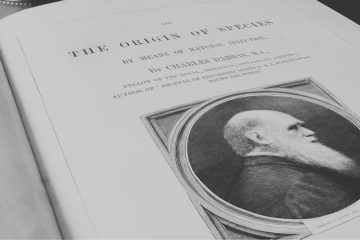What Happened On September 4th?
On September 4, 1998, Larry Page and Sergey Brin, two Stanford PhD students, filed the paperwork to formally establish Google. Working with limited resources, they operated out of a rented garage in Menlo Park, California. It was in this garage where they transformed their search engine project into a business. Their search engine had already gained traction for its innovative PageRank algorithm, which was outperforming other search engines by delivering highly relevant results based on website link analysis.
Page and Brin’s project had initially begun in 1996 as a research venture. They sought to create a search engine that ranked websites based on the number of other sites linking to them, a system far more efficient than existing keyword-based methods. By 1998, their algorithm had shown such promise that they decided to turn their project into a formal company. The name “Google,” which came from a misspelling of the mathematical term “googol” (a 1 followed by 100 zeros), reflected their ambition to organize the web’s vast resources.
Interestingly, the original name for Google was “BackRub,” referencing the way their search engine analyzed website links. However, they quickly recognized that a rebranding was necessary to give their project a more marketable name. That decision paved the way for the global recognition Google would eventually enjoy.
Google’s first office was a small garage rented from Susan Wojcicki, who later became the CEO of YouTube. What few people know is that Wojcicki’s decision to rent out her garage was motivated by a very practical need—she wanted to cover her mortgage. At the time, she had no idea she was providing a workspace for what would become one of the most valuable companies in history.
Page and Brin’s operation in that garage was incredibly lean. They set up rows of low-cost computers to handle web crawls, maximizing efficiency while keeping costs low. The decision to work with cheaper hardware, rather than splurging on expensive servers like their competitors, proved to be a critical factor in Google’s early scalability. What seemed like a cost-saving measure ended up giving them the flexibility to handle the exponential growth that was just around the corner.
It’s also worth noting that the garage housed not only Google’s servers but its entire team. In the early days, Page, Brin, and a small group of employees all worked in close quarters, experimenting with different aspects of the search engine and constantly refining its functionality. This collaborative environment helped to accelerate Google’s development.
In 1999, barely a year after Google was founded, Page and Brin offered to sell the company to Excite, one of the most popular search engines at the time. They asked for $1 million, but Excite’s CEO, George Bell, turned them down. Even after Page lowered the price to $750,000, Bell remained uninterested. This decision later went down as one of the biggest missed opportunities in Silicon Valley history. Had Excite bought Google, the entire trajectory of the internet could have been different.
Page and Brin’s decision to continue developing Google instead of selling it turned out to be a turning point. Google’s rapid growth following this rejected offer cemented their place in tech history. They knew that the technology they had built was more advanced than anything else available, and they refused to let it go for less than what they believed it was worth.
What’s often overlooked is that Bell’s hesitation wasn’t just about the price. Excite’s leadership viewed Google’s approach as too disruptive. They feared that Google’s emphasis on providing clean, fast search results without cluttering the page with ads would limit their own revenue potential. Ironically, this focus on user experience became one of the very factors that led to Google’s eventual dominance.
Google’s minimalist homepage stood out in an era when competitors crowded their sites with ads, news, and links to other services. Page and Brin’s insistence on keeping the interface simple wasn’t just a stylistic choice; it also reflected their desire to prioritize speed and user experience. Their decision to avoid banner ads also stemmed from a belief that ads could interfere with the quality of search results.
Neither Page nor Brin had much experience with HTML or web design, so they opted for a clean and basic layout out of necessity. This minimalist approach ended up resonating with users who appreciated its focus on delivering search results quickly, without distractions.
Google’s speed became one of its defining characteristics early on. Since Page and Brin had cleverly networked inexpensive computers together, their system crawled the web faster than their competitors. This gave them a crucial edge in the search engine wars, as users began to gravitate toward Google’s quick and accurate results.
In 2000, Google introduced AdWords, an advertising platform that allowed businesses to bid on keywords and display small, relevant ads alongside search results. This shift fundamentally changed how online advertising worked. Unlike intrusive banner ads, AdWords offered a more subtle approach, ensuring that ads only appeared when they matched what the user was already searching for.
Interestingly, AdWords didn’t find instant success. In its early days, many businesses found the platform confusing and were reluctant to use it. Page and Brin’s team worked tirelessly to improve the system, simplifying the interface and making it more intuitive. Once businesses began to understand its potential, AdWords became a game-changer, quickly becoming the company’s primary revenue source. This provided Google with the financial resources it needed to expand and innovate without compromising the quality of its search engine.
A major turning point for Google occurred in 2000 when AOL, then the largest internet service provider in the U.S., selected Google to power its search engine. Before choosing Google, AOL had considered other major players like Yahoo, but Google’s superior search algorithm and user-friendly interface won out. This partnership exposed millions of AOL users to Google’s search engine, dramatically boosting its visibility.
What’s often missed in the recounting of this deal is the behind-the-scenes competition for AOL’s business. Yahoo, which had dominated the search engine market at the time, lobbied hard to win the contract. However, Google’s faster results and cleaner design made a stronger impression on AOL’s decision-makers, securing them the deal. This partnership was pivotal in propelling Google into the mainstream, helping it surpass its rivals in the years that followed.
By 2000, Google processed over 100 million search queries a day. The deal with AOL played a crucial role in increasing Google’s user base, positioning it as the go-to search engine for users around the globe.





